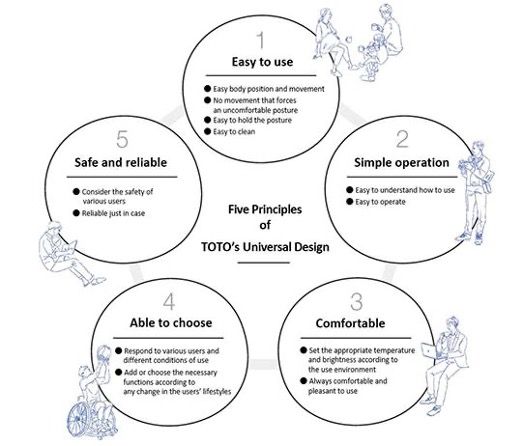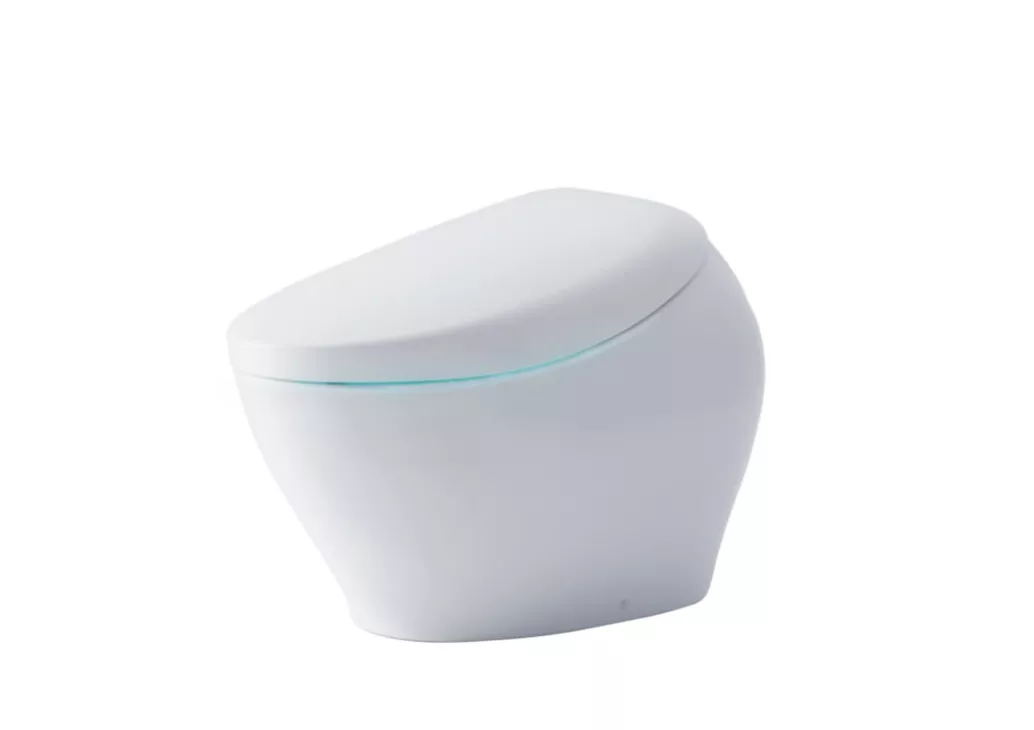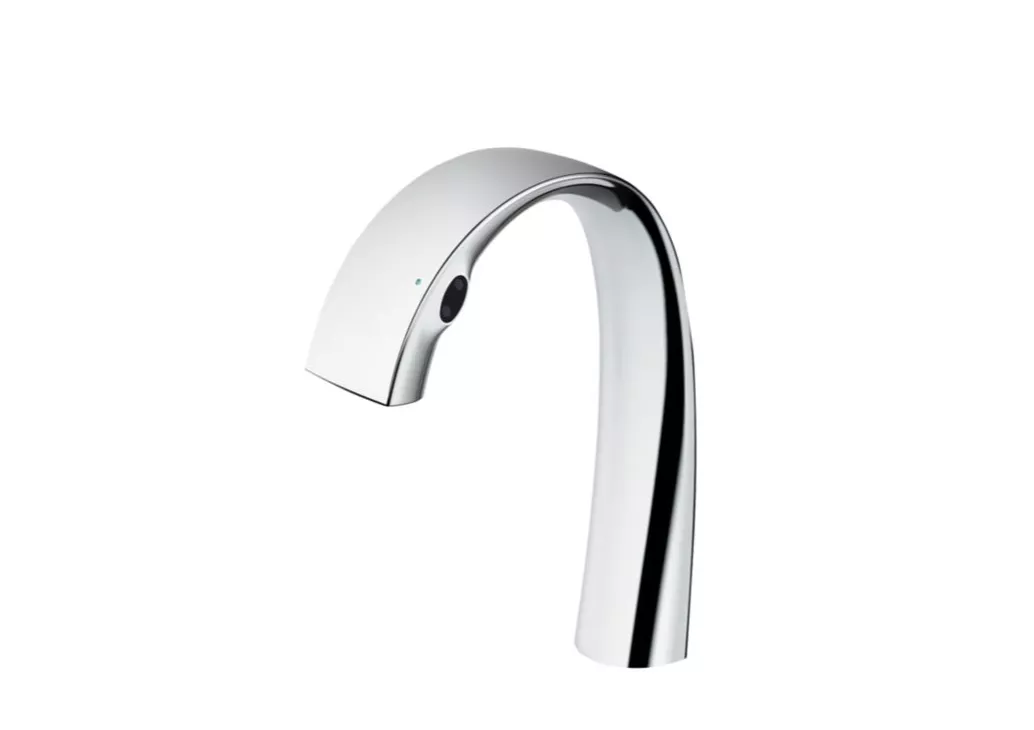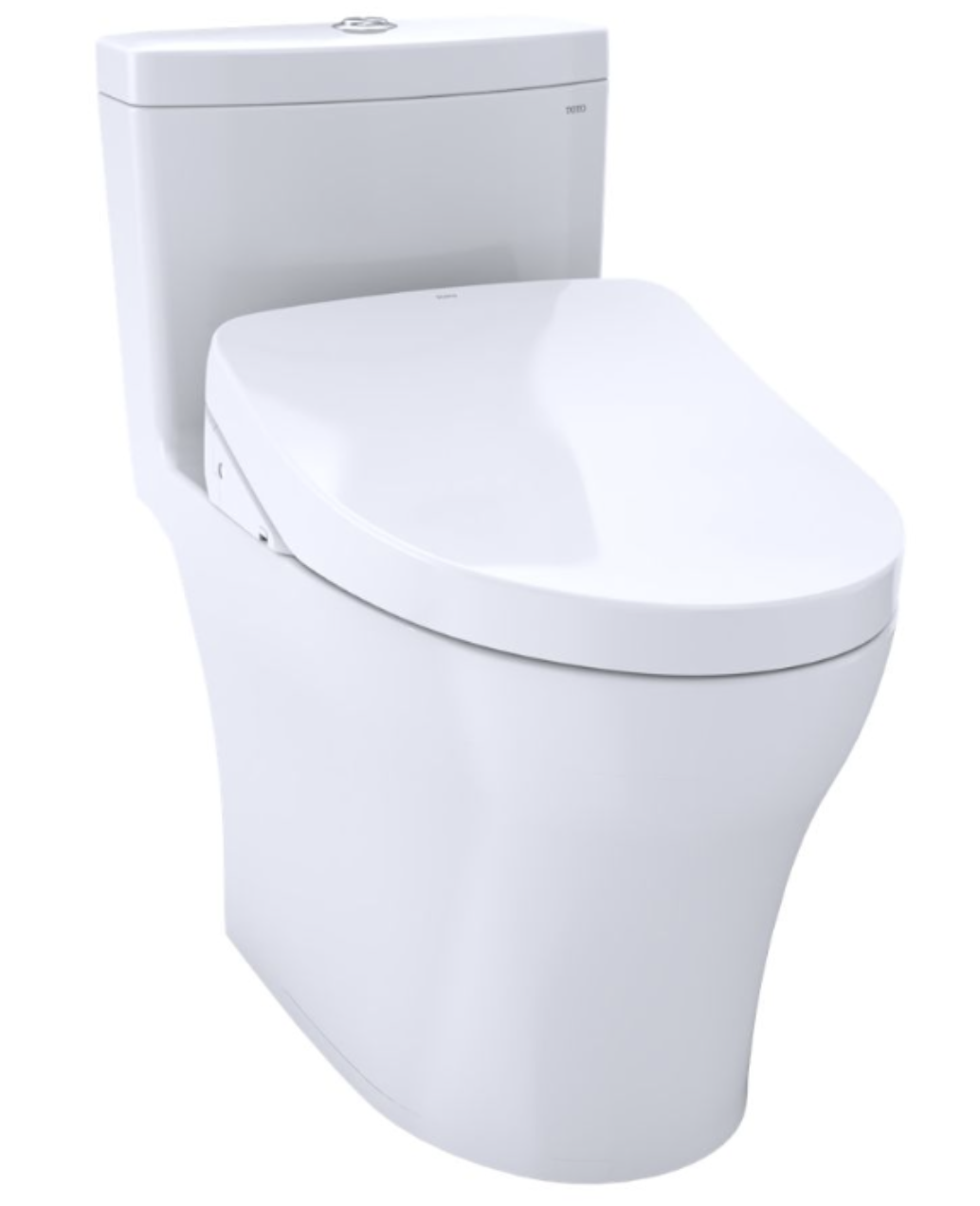TOTO’s Newest Continuing Education Course:
“Making Yourself At Home - Designing Bathrooms for Living in Place”
.png)
TOTO USA’s newest CEU course, “Making Yourself At Home - Designing Bathrooms for Living in Place,” dives into one of the most pressing concerns for homeowners: how to live in their own homes comfortably, safely, and independently regardless of age or ability, with a focus on the bathroom.
AIA, IDCEC, NKBA, and NARI have reviewed and approved that this course educates design and architecture professionals about how Living in Place concepts can be applied to projects for all occupants and visitors, regardless of age or ability. Industry professionals meet their clients to ensure their needs and desires are met. However, by learning the strategies, technologies, and design features that facilitate clients’ long-term habitation in their own homes, design-build professionals provide valuable leadership and design foresight, helping promote the client’s dignity and independence.
What is Living in Place?
Living In Place refers to remodeling homes to make them accessible, safe, healthy, beautiful, and connected — regardless of age or ability.
Living in Place fosters independence, empowering individuals to live on their own terms. Residents can stay in their own homes or design new homes surrounded by familiar sights, furnishings, and loved ones. In the case of older Americans, these accommodations enable them to live their best lives in their current home without the need to move into a senior living center, which dramatically contributes to their economic security. In addition to financial reasons, more and more studies find that Living in Place increases physical and mental health for occupants of all ages. In fact, Living in Place allows residents to safely and comfortably engage with their communities, reducing loneliness and isolation.
Definition of Living in Place:
Living In Place is the practice of making all homes accessible, healthy, and safe, creating beautiful and connected environments for everyone, regardless of age or needs, both chronic and temporary. Rather than focusing solely on accessibility or Aging-In-Place when designing homes, Living in pLace focuses on educating and networking with the entire housing industry to improve every home for all ages and abilities. By addressing all individuals, practical solutions for everyone’s needs can be built into every home.
How Does Living in Place Differ from Universal Design, Accessible Design, Aging in Place, and Inclusive Design?
Living in Place overlaps with other accessibility-related approaches, but it is worth considering how it differs. Aging-in-Place is directed specifically toward older adults and does not necessarily consider the challenges of younger individuals or families. Universal Design takes a more utilitarian approach to products and the built environment and may not prioritize aesthetics. Accessible Design has become synonymous with the ADA, which many see as mere code compliance that does not consider a wide range of design needs. Finally, inclusive Design encourages professionals to consider the diverse range of users who will interact with their designs. While each of these concepts is beneficial in its own way, Living in Place combines them and applies these approaches to residential design for all people.
TOTO’s Concept of Universal Design Incorporates Living in Place Concepts
Interestingly, the TOTO Global Group’s Universal Design Research Center for Advanced Science and Technology (UD Center) has developed its unique concept of Universal Design that is quite similar to that of Living in Place. TOTO strives to help create a society that allows as many people as possible to live comfortable lives. To achieve this, TOTO offers easy-to-use products and services to as many customers as possible.
By combining the idea of usability and comfort, TOTO established its Five Principles of Universal Design. All TOTO products are developed with these principles in mind.
In 2002, TOTO built the plumbing industry’s only research center dedicated to Universal Design. TOTO’s UD Center is the hub of research-driven product development for residential and public spaces. The insights gained are then shared with the architecture and design community.

TOTO’s Universal Design concepts continually evolve to meet its customer needs. TOTO collaborates with organizations representing individuals of varying ages and physical abilities from inside and outside the company to test the products on an ongoing basis. Further, to enable its product designers and engineers to experience the reduced physical movements (range of motion) of individuals with special needs, TOTO designed an “aging suit” that adds weights to the joints of their arms and legs.
In this way, TOTO engineers can understand - at a somatic level - the difficulty some people experience when rising from a sitting to a standing position, lowering themselves from standing to a sitting position, or moving in and out of enclosures such as tubs and shower stalls. TOTO’s UD Center also houses a Visual Acuity Simulator, which uses special frosted glass to recreate the dim sight experienced by a person of low visual acuity.
Benefits of Bathrooms that Integrate Living in Place
Accessible and adaptable bathrooms allow older residents and those with disabilities to maintain their independence and self-management, which helps them retain a sense of competence and self-worth. While this benefits these residents and visitors, it can also reduce the hands-on care required. For example, when a family member with a disability can negotiate their home environment more easily and fully access their communities, their caregivers experience reduced isolation, stress, and burn-out levels. Households with young children also benefit from accessible and adaptable bathrooms, which help children and adults regain independence and autonomy. For architects and designers, creating new or renovating existing homes and housing projects to be more accessible includes a new market that likely is not being served.
The Centers for Disease Control and Prevention (CDC) estimates that about 50 billion dollars is spent on medical costs related to non-fatal fall injuries, and 754 million dollars is spent on fatal falls each year. Anyone, even able-bodied people, can fall and hurt themselves in an unsafe bathroom. While implementing Living in Place principles in every home bathroom helps ensure that spaces are safe and comfortable for everyone, high assisted-living home costs mean that Living in Place could yield significant cost savings for the elderly and those who need a lower level of assistance. Expenditures for assisted living homes are more than three times those for noninstitutional long-term care services, and these costs continue to rise.
How One Can use Living in Place concepts when Designing Bathrooms
Living in Place residences and bathrooms should be accessible. The room entrance should have an accessible route—meaning no stairs are necessary for entry. Doorways should be sufficiently wide to allow passage by people using a wheelchair. There should also be an accessible route into and through each area. Light switches, electrical outlets, and environmental controls should be positioned in accessible locations. The size and design of bathrooms should allow maneuverability by persons using a wheelchair, with adequate area size, adequate leg room, and height of surfaces.
Examples:
Entryway
When designing Living in Place bathrooms, the first thing to consider is how individuals will enter the area. The bathroom door, as well as closet doors or water closet doors (if included), should be equipped with lever handles so any person can easily open them with an elbow, fist, hand, or body. Lever handles with end returns are beneficial for everyone but especially helpful to those with arthritis, limited hand dexterity, or use a wheelchair. Make sure you use lever handles with an end return angled towards the door. The “end-return” will help prevent clothing, purses, bags, or other items from snagging. Additionally, if individuals lean on a lever handle without an end return, their hands may slip, causing a fall.
Smart Technologies
Now more than ever, clients have their pick of smart home technologies that can make their lives easier. From security cameras for monitoring who is coming and going to automatic lighting for brightening dark hallways to integrated hygiene units like TOTO’s NEOREST, smart home technologies give clients and their loved ones peace of mind. According to NKBA's “2022 Design Trends Research Report,” new bathroom trends will be related to technology. Homeowners are especially excited about heated floors, new control options for showers and lighting (e.g., voice-activated, apps, home systems, touchpads), smart toilets/bidets, and smart mirrors.
The National Association of Home Builders’ “Remodeling Market Index Survey'' for 2018 looked at specific types of Aging-in-Place projects undertaken by remodelers during the previous year. It comes as no surprise that bathroom projects dominated the top spots. Over 80 percent of remodelers reported installing grab bars, higher toilets, and curbless showers.
Vanity
An accessible bathroom vanity can be just as design-forward as a standard one. For example, adjusting the vanity’s height to help all users use the sink. Accessible vanities are usually 34″ or shorter. Make sure there are no sharp edges on the vanity to help reduce injuries as users move about the bathroom. Wall-mounting vanities and sinks make it easier for users to get close to those fixtures when in a wheelchair. If the design must include a vanity that reaches the ground, ensure there is a deep kick space for feet whether individuals are standing or in a wheelchair.
Install an electrical outlet for a docking station in a vanity drawer to minimize dangling cords that can trip users. On that note, include drawers and shelves at varying heights to provide better access to items users might need in a bathroom. Also, consider how easy it is to open and close the drawers and cabinets in the room.
Finally, minimize reflections on the counter and the floor. Individuals’ eyes adapt by limiting the amount of light, making it difficult to differentiate between low contrasting items. Very bright light creates glares and afterimages, making it difficult to see when the glare is removed.
Faucet
Another important feature of the bathroom vanity is the faucet. All users should be able to easily and safely operate the faucet. Several factors impact a bathroom faucet’s accessibility. First, the faucet should require less than 5 lbs of force to activate the water flow. Second, the user should be able to operate the faucet using one hand. Third, the faucet handles should be 48” from the ground or lower. If the faucet handles are too high, they can be difficult for many people to use. Fourth, the water faucet should ideally be mounted on a surface with appropriate clearance. As discussed with the vanity, ensure there is enough space for those in wheelchairs to get close to the sink and operate the faucet. Finally, for many users, an automatic, sensor-operation faucet allows easy access to wash their hands and perform other tasks since it eliminates the need for levers or buttons to touch.
Toilet Height
Toilet height is a crucial factor that clients might not consider. Older toilets are 13-15 inches (~33-28 centimeters) from floor to seat. These can be difficult for older adults or those in wheelchairs to use, given that wheelchairs are typically about 18 inches (or 46 centimeters) from floor to seat. Newer Universal Height toilets are 17-19 inches (~43-48 centimeters) from the floor to the top of the seat, making transfers on and off easier. However, these taller toilets can be problematic for shorter people and children. Designers should consider using different bathrooms around the house for different needs; this could mean installing shorter toilets in other bathrooms.
Toilets and Electronic Bidet Seats
Of course, the toilet is one of the main features of the bathroom. A fixture in bathrooms worldwide, electronic bidet seats like TOTO WASHLET and integrated hygiene units like TOTO NEOREST are growing in popularity in North America due to their health and wellness benefits. Perineal care has a significant impact on the overall quality of life. Accessible products like electronic bidet seats dramatically improve the health and wellbeing of occupants and visitors.
Because bidet seats are easier to use than standard toilets, they preserve the independence, confidence, and privacy of users who otherwise might need assistance from caregivers to use the toilet. In addition, one study in The American Journal of Occupational Therapy found that installing an automated bidet seat reduced caregivers’ injury risk and physical burden. Bidet seats are ideal for anyone but are especially helpful for toilet-training children, pregnant women, older adults, and those with disabilities.
Electronic bidet seats can be a good option for clients interested in trying bidets. These seats fit most standard North American toilets, so clients can rest easy if they decide to remove them. Installing a bidet seat is as easy as changing the toilet seat. Clients add a bidet seat to their bathroom in less than an hour and begin enjoying improved cleanliness and comfort. Look for manufacturers like TOTO, who provide standard toilets with built-in adaptability for electronic bidet seats.
Professionals will ensure that current and future residents can quickly and easily upgrade to a bidet seat by specifying an electrical outlet near the toilet.
NEOREST Integrated Smart Toilets
For a more permanent option, integrated hygiene toilets, like TOTO’s premium NEOREST smart toilets, perform more functions than a traditional bidet without the need to transfer from the toilet. TOTO NEOREST models include top-of-the-line features, including an adjustable heated seat, warm water personal cleansing, deodorizer, a dryer function, automatic opening and closing lid, nightlight, automatic dual flush, and a bowl and wand sanitizer. Each feature will help improve health and confidence in users of all ages and abilities.
Shower Controls and Faucets
Install shower controls close to the entrance of the shower and tub for ease of use, at 44 inches centerline above the floor for access by everyone. A single lever handle with a pressure balance valve controls both the water volume and the hot and cold water ratio. That is, if the water heater’s temperature changes, the control’s adjustment must be changed. On the other hand, a dual lever with a thermostatic mixing valve controls the flow of hot water based on the temperature. If the water heater temperature changes, the control valve does not require resetting.
A handheld showerhead is becoming standard. Install a grab bar properly mounted on the wall. For ease of bathing, use a handheld shower wand with an adjustable mount. Mount it on a properly installed grab bar using a wand holding clip. Installing grab bars into old studs is not recommended in existing bathrooms because you will not know the condition of the studs (e.g., rotted wood, infestation by termites, etc.).
Conclusion
An accessible bathroom provides ease of use for an entire community. That is, if a home does not have an accessible bathroom, it prevents ease of use for a variety of residents and visitors. Incorporating the principles of Living in Place in the overall design and specific products like TOTO’s toilets, WASHLET bidet seats, faucets, lavatories, and showers, helps ensure that every residential project is accessible and beautiful for all occupants and visitors, regardless of age or ability. As a manufacturer, we believe that we share the responsibility with design and architecture professionals to help their clients design residential bathrooms that go beyond code compliance to promote independence and dignity for all.


